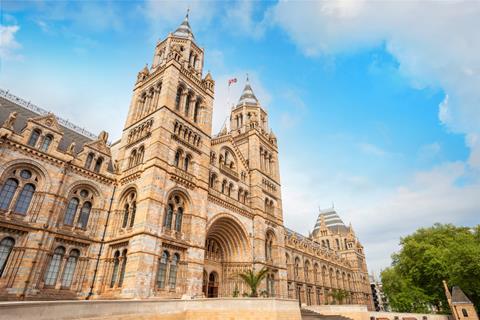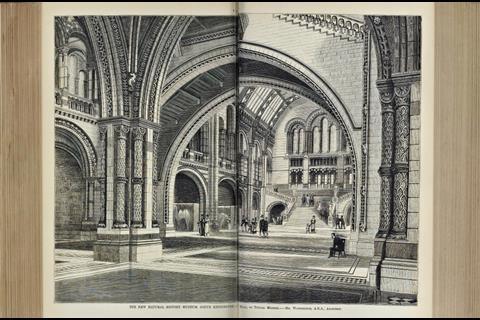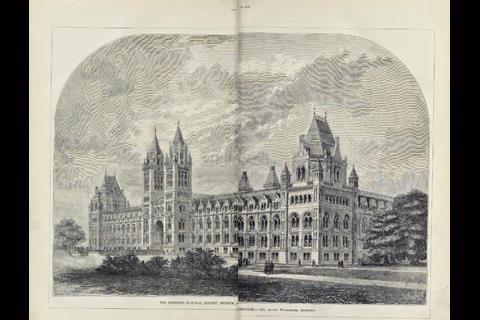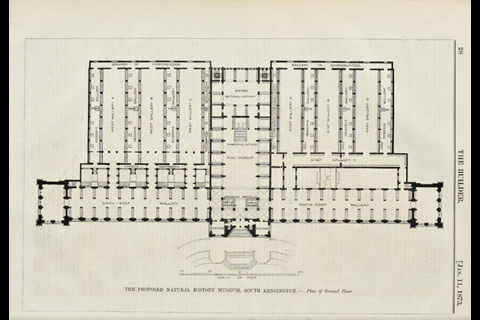An account of what visitors found when being shown round the half-completed building by its architect Alfred Waterhouse

Site safety is one aspect of construction the Victorians did not excel at, but usually it would be the builders who are at risk. On a visit to the site of the Natural History Museum in 1876, it was members of the Architectural Association who found themselves narrowly avoiding a fatal accident. Workers on the scaffold above accidentally dropped two or three bricks, which landed within 2ft of the tour group and smashed one of the half-completed building’s terracotta tiles.

The piece below nonetheless gives a good sense of the state of the building three years into its construction and four years before it was completed in 1880. Designed by Manchester Town Hall architect Alfred Waterhouse, it was among the first buildings to be covered almost entirely in terracotta tiles, which could resist London’s sooty atmosphere. The tiles were also used for the interior, although those on the floor would be boarded over on the request of curators who ”find it exceedingly unpleasant to be constantly on a tile floor”.
The report also highlights the dangers of gas lighting at the time. Bottles containing fish preserved in spirit were deemed at risk of exploding if ignited by a stray flame, meaning that much of the building would remain unlit.



















